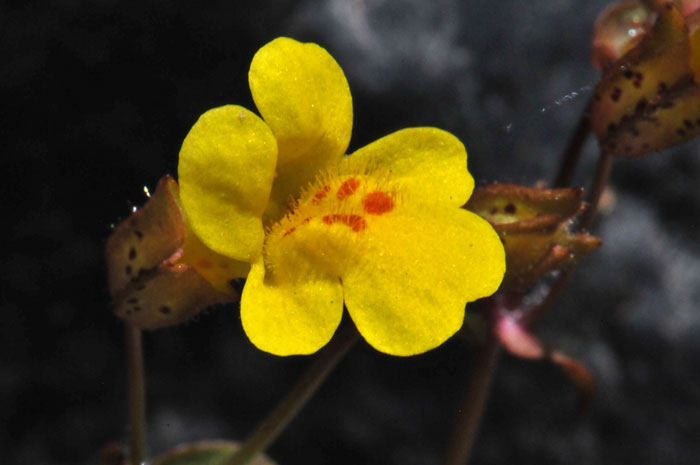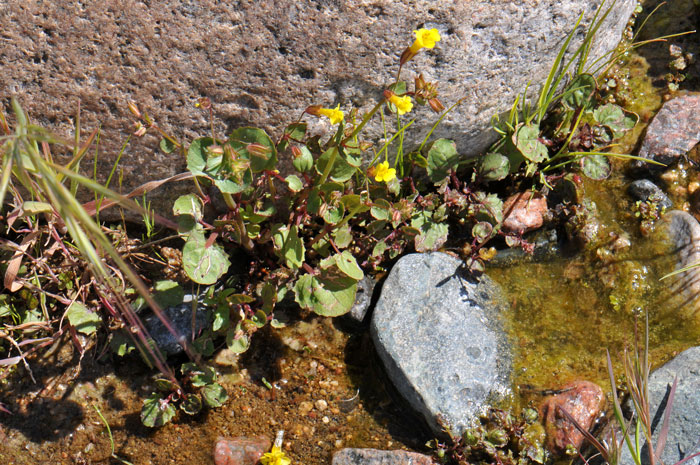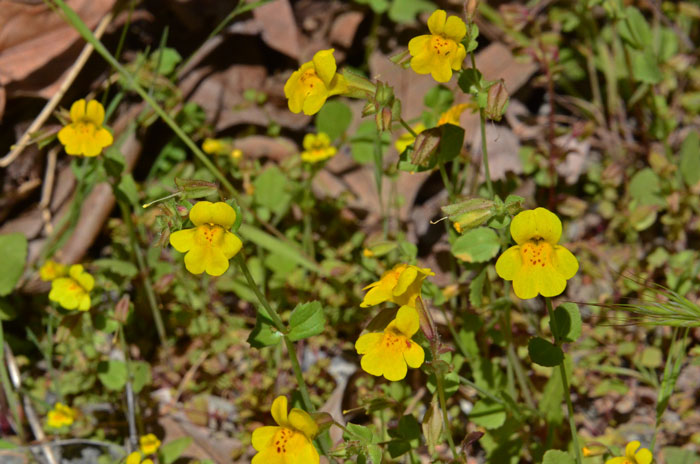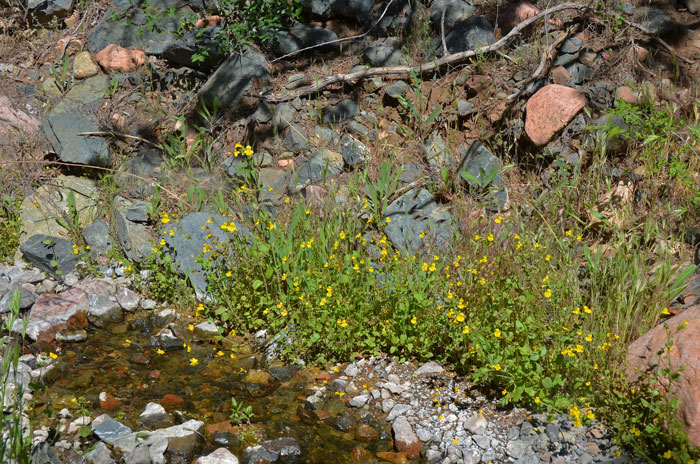Mimulus guttatus, Seep Monkeyflower




Scientific Name: Mimulus guttatus
Common Name: Seep Monkeyflower
Also Called: Common Monkeyflower, Common Yellow Monkeyflower, Monkeyflower, Parish's Monkeyflower (Spanish: Lama)
Family: Scrophulariaceae, Figwort or Snapdragon Family - Moving to Phrymaceae
Synonyms: (Mimulus 38 spp; Mimulus 25 var; Mimulus 6 subsp
Status: Native
Duration: Annual or rhizomed perennial herb; plants hairy or glabrous.
Size: Up to 2 feet or so (3 feet max).
Growth Form: Forb/herb; plants extremely variable in size and form.
Leaves: Green, bright green; 3 inch petioles, leaves variable ovate or broadly rounded, leaves with pointed or rounded teeth (crenate).
Flower Color: Yellow; bright yellow; flowers bilaterally symmetrical on slender pedicels in upper leaf axils; flowers with pubescence or glabrous; calyx with irregular spots, corolla yellow with purple spots on lower lip.
Flowering Season: March to September; March to August in California.
Elevation: 500 to 9,500 feet; up to 8,300 feet in California.
Habitat Preferences: Common along streams and brooks, mostly terrestrial or may be floating in mats.
Recorded Range: Mimulus guttatus is found in the western ½ of North America and in a few states east of the Mississippi River. It is also native to northern Mexico. In Arizona it is found throughout the state with few or no records in Greenlee county.
North America & US County Distribution Map for Mimulus guttatus.
U.S. Weed Information: No information available.
Invasive/Noxious Weed Information: No information available.
Wetland Indicator: In North America Mimulus guttatus has the following wetland designations:
Alaska, OBL; Arid West, OBL; Atlantic and Gulf Coastal Plain, OBL; Eastern Mountains and Piedmont, OBL; Great Plains, OBL; Midwest, OBL; Northcentral & Northeast, OBL; Western Mountains, Valleys, and Coast, OBL.
OBL = Obligate Wetland, almost always occur in wetlands.
Threatened/Endangered Information: No information available.
In the Southwestern United States, Arizona there are 13 species of Mimulus, in California there are 78 species, Nevada has 24 species, New Mexico has 10 species, Texas has 5 species, Utah has 14 species. All data is approximate and subject to taxonomic changes.
Comments: Mimulus guttatus is extremely variable in size and form and local populations have been incorrectly classified, thus the explanation for nearly 70 synonym names.
Mimulus guttatus has been used for food for a variety of purposes by North American indigenous peoples.
Kawaiisu Drug, Analgesic, Decoction of stems and leaves used as steambath for chest and back soreness.
Mendocino Indian Food, Substitution Food, Plants used as a substitute for lettuce.
Miwok Food, Vegetable, Boiled leaves used for food.
Shoshoni Drug, Dermatological Aid, Poultice of crushed leaves applied to wounds or rope burns.
Yavapai Drug, Gastrointestinal Aid, Decoction taken as tea for stomachache.
See ethno-botanical uses at Native American Ethnobotany, University of Michigan, Dearborn.

